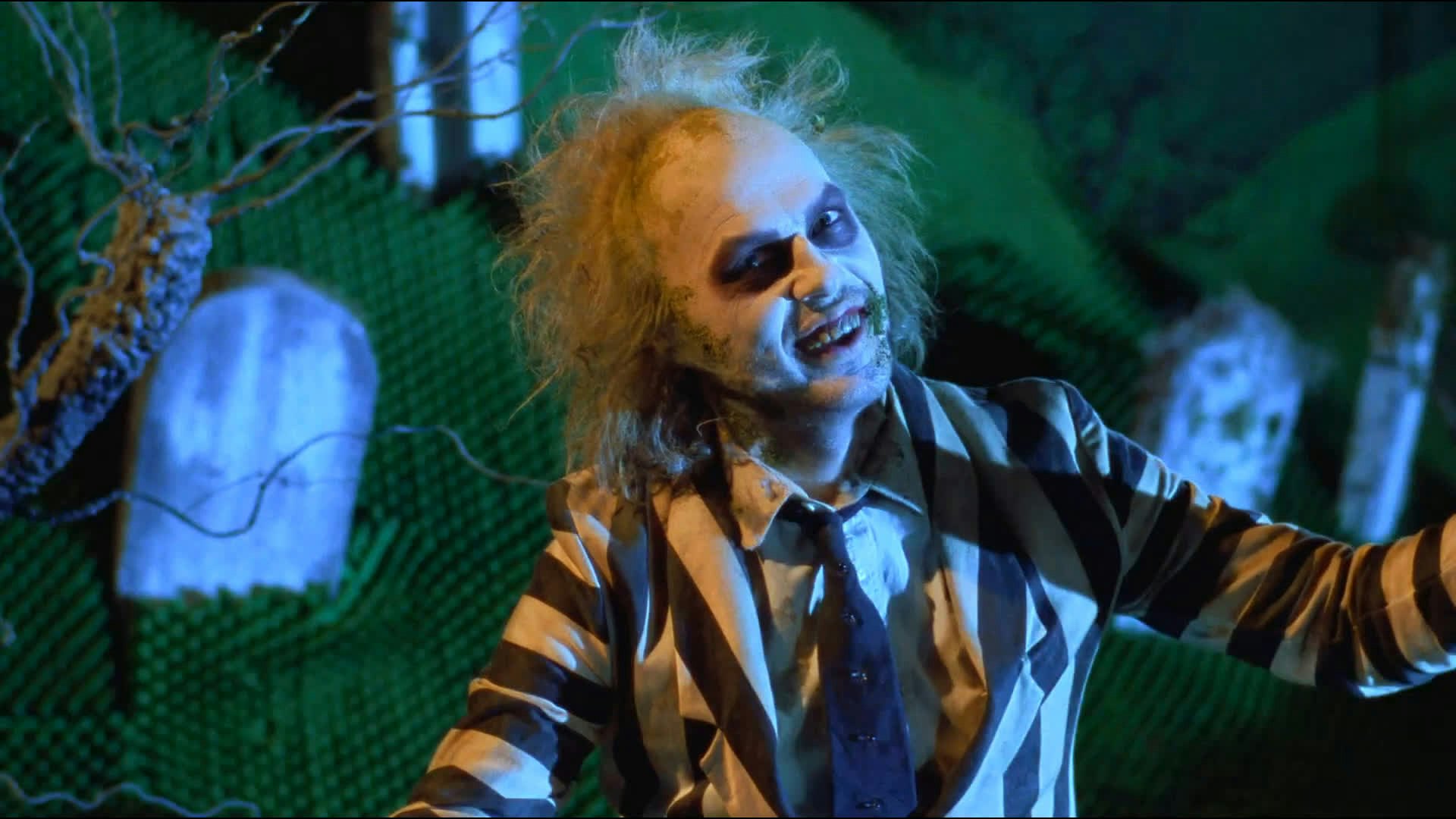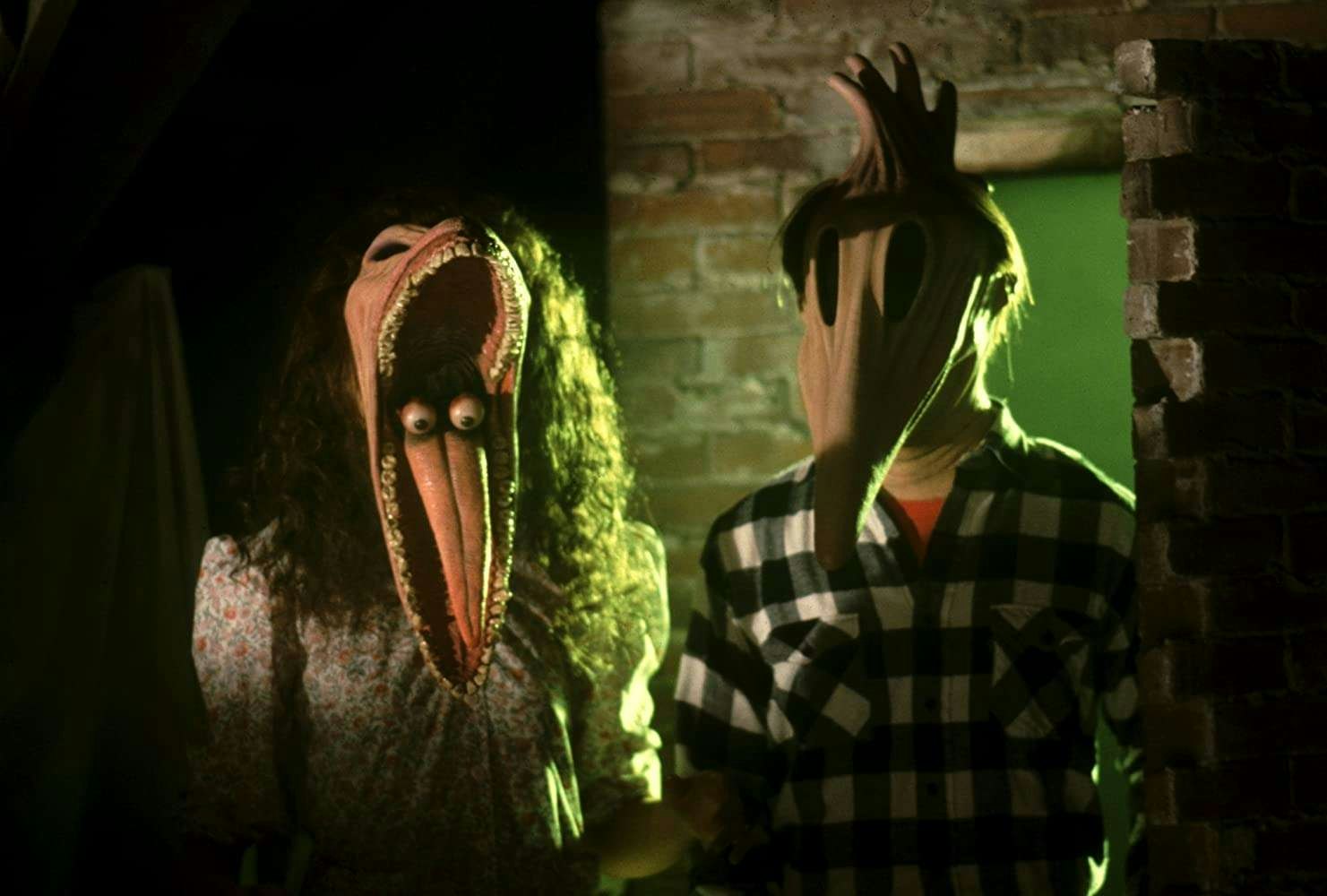
Even someone who’s never seen a Tim Burton movie can probably conjure an image of the Tim Burton style. It’s a sort of goth kitsch, a mix of creepy and cute that Burton has applied to properties ranging from Sleepy Hollow to Dumbo. But before he became a brand name, Burton established his personal style with an original movie that encapsulated the aesthetics and themes that would define his career.
Beetlejuice is only Burton’s second feature, following 1985’s Pee-wee’s Big Adventure, but it finds the filmmaker fully formed, expanding on the ideas and images of his short films. Originally conceived as a darker horror, Beetlejuice became a gleefully morbid comedy thanks to Burton and his hand-picked screenwriter, Warren Skaaren. The title character changed from a homicidal demon to a mischievous boor, more vulgar than scary. The leads begin the movie by dying in a car accident, but even the hellscape they encounter outside their front door looks more like a trippy music video than a place of eternal torment.
They may have made the biggest pop culture impact, but neither Michael Keaton’s ghoulish self-proclaimed “bio-exorcist” Beetlejuice nor Winona Ryder’s teen goth icon Lydia Deetz is the main character. Rather, the protagonists are the subdued, unassuming Maitlands, Adam (Alec Baldwin) and Barbara (Geena Davis). The balance between the cozy, good-natured married couple and the outlandish supporting characters, both living and dead, is what makes Beetlejuice so entertaining, a balance Burton increasingly lost sight of. In his later work, characters like Beetlejuice and Lydia are often the leads, with the cartoonish grotesquerie outweighing the grounded emotion.
Not that Beetlejuice is grounded, exactly, but Baldwin and Davis convey genuine warmth in their relationship, and genuine heartbreak when they discover they’ve passed on. That distress increases with the arrival of the Deetzes, crass New Yorkers who buy the Maitlands’ cozy Connecticut home and start turning it into a modern-art monstrosity. Thanks to the arcane rules of the afterlife, the Maitlands must spend 125 years confined to the house they inhabited while alive, so they’re determined to drive the Deetzes away by any means necessary.

That leads them to engage Beetlejuice’s services, although he’s not nearly as central to the movie as his title billing might indicate. Before summoning the supernatural scumbag by saying his name three times, the Maitlands attempt various hauntings of their own, which offer a tour of Burton trying out his ongoing visual motifs. The afterlife reception room where the Maitlands wait to meet their caseworker looks like a sort of haunted tiki lounge, complete with a receptionist in a pink beehive hairdo. Later, they walk down an M.C. Escher-influenced hallway with black-and-white patterns that repeat in later Burton titles.
Adam and Barbara contort their facial features into gruesome caricatures that look like creatures inhabiting Mars Attacks! and Corpse Bride. Even Adam’s miniature model of their quaint town, where a shrunken Beetlejuice takes up residence, resembles the deceptively placid suburban setting of Edward Scissorhands or Frankenweenie.

The movie’s most famous sequence, when the Maitlands possess the Deetzes and their dinner guests and force them to dance to Harry Belafonte’s “Day-O (The Banana Boat Song),” is inventively staged and exuberantly performed, but from the Maitlands’ perspective, it’s a total failure. Instead of feeling terrified, the intended victims are delighted. As much as Burton embraces darkness, his work generally produces the same result: anything potentially scary becomes goofy and ridiculous. In Beetlejuice, at least, that outcome is intentional.
Lydia’s kinship with the ghosts inhabiting her family’s house comes closest to expressing Burton’s perspective. “I, myself, am strange and unusual,” she declares, and when she learns that the Maitlands are actually dead, she exhibits unbridled enthusiasm. That self-proclaimed penchant for the macabre is what the Burton brand is all about, and while it comes off as organic and real here, within a decade it would be commodified and calcified on Hot Topic racks.
“This is my art, and it is dangerous!” exclaims pretentious dilettante Delia Deetz (Catherine O’Hara), whose Burton-esque sculptures are eventually co-opted and possessed by Beetlejuice. Burton’s art has never exactly been dangerous, but in Beetlejuice it’s still fresh and vibrant. Even 35 years later, watching it still feels like witnessing the birth of something truly new and exciting. There remains a spark of that, however small, in everything Burton’s done since.







